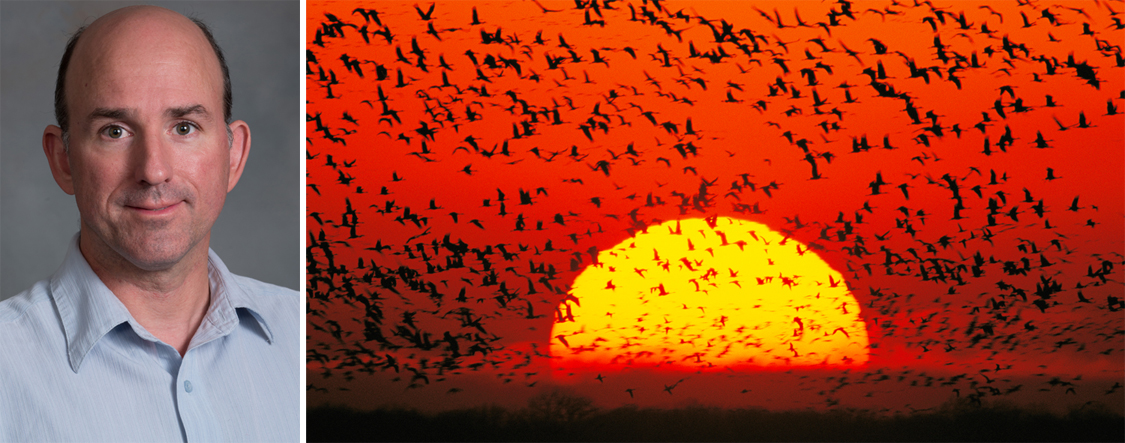
Scientists have long suspected that birds' migratory speeds and pathways are ultimately affected by their body size, rather than their physical limitations. UNL ecologist John DeLong played a significant part in a newly published study that has confirmed that theory.
The work, in which DeLong collaborated with researchers at Cornell University, confirmed that larger birds are much slower in their migrations. It also formed a broad outline of the migration patterns of 102 bird species in the lower 48 states by using data from Cornell's eBird database, where bird watchers record their observations.
The study is the first to examine the migratory paths of a cross-section of bird species. DeLong, assistant professor of biological science, lent his expertise to the study by mining the data to see how birds' body size affects their migratory speed and how closely previous predictions matched the findings.
The research gives a more complete picture of bird migration in the United States, which could help educate conservation efforts. DeLong said past studies on birds have only been completed by tracking individual birds using various techniques. With the use of the eBird database, researchers have access to millions of observations. For the recent study, published in the journal Ecology, bird observations from 2007 to 2011 were extracted.
The study coincides with DeLong's past research. DeLong has previously researched migratory birds, including a 2013 study on sharp-skinned hawks and how they choose their prey, which also showed a correlation to body size. One of his primary research interests is the evolution of body size and how a species' evolution is affected by climate change, population and other factors.
Prior to the new study, scientists had theorized and formed mathematical equations that suggested body size should affect species' migratory abilities, such as speed. UNL's DeLong and lead author Frank La Sorte of Cornell had expected the findings to confirm the body size theory -- but they were surprised that when looking at 102 separate species, the findings almost exactly aligned with previous theories and predictions.
"That's usually very hard and unlikely," DeLong said. "Body size affects the speed of migration, but the (mathematical) slope follows almost exactly what was predicted in the past. That's the amazing part."
La Sorte said he expected the predictions to hold true, but not as closely as they did.
"At this large scale, there is so much variation in individual patterns of migration," he said. "We expected to find that when you integrated across individuals, you would see something different from what had been predicted, but that was not the case."
Looking at large numbers of individual birds is important when exploring their life cycles and understanding the actual patterns among species can help conservationists make the best use of limited resources, La Sorte said.
"Land has been set aside to conserve habitat for birds, but it's not really based on an understanding of what the bird populations are actually doing," La Sorte said. "This study helps nail down where these birds are going during migration. Most of our knowledge is based on the breeding season, which only lasts several weeks. We need full life-cycle research and that will provide a more comprehensive perspective for conservation efforts."
DeLong said he was particularly excited to take part in the research because the project used "citizen scientists" -- millions of observations recorded in eBird from thousands of bird watchers. Had researchers attempted to generate this data on their own, they "could spend their entire careers doing nothing but that and they’d never accomplish it," he said.
"You have very profound limitations on the number of birds you can sample and the scale in which you can do it," he said. "The traditional model is a scientist comes up with an idea and then goes out and makes some observations to test this idea and they have an answer. That answer is very limited compared to the observation that could be made, using much more data.
"Now, somebody comes up with an idea and there are a million citizen scientists out there who can contribute."
— Deann Gayman, University Communications